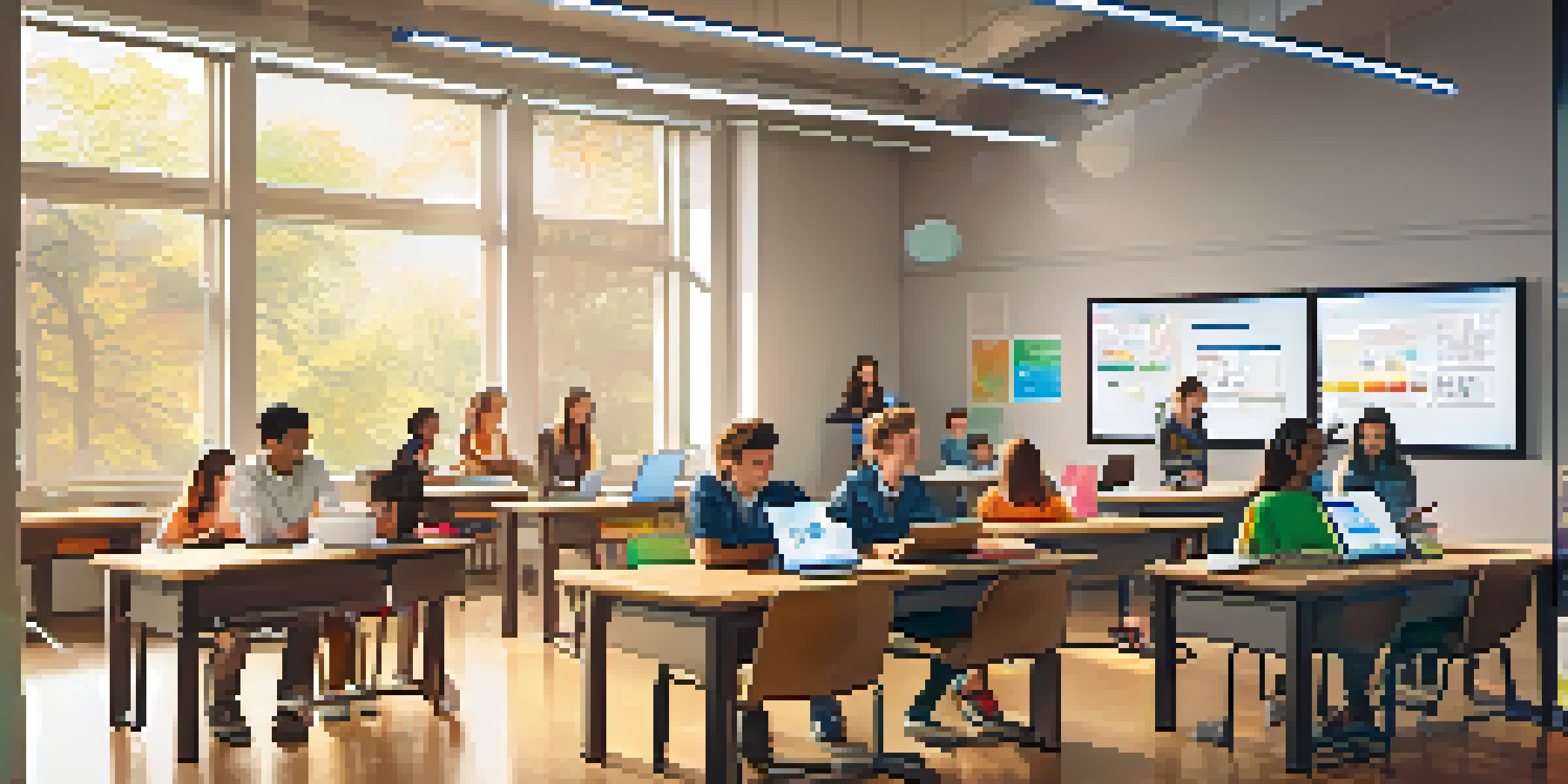Balancing Automation and Human Interaction in Learning

Understanding the Role of Automation in Learning
Automation in learning often refers to the use of technology to facilitate educational processes. From online courses to AI-driven tutoring systems, automation can streamline tasks like grading and scheduling. This technology not only saves time but also provides personalized learning experiences tailored to individual needs.
The Importance of Human Interaction in Education
Despite the rise of automation, human interaction remains a cornerstone of effective learning. Teachers provide emotional support, mentorship, and motivation that technology simply cannot replicate. The nuances of face-to-face communication, such as body language and tone, foster a deeper understanding and connection.
Automation Enhances Learning
Technology streamlines educational processes, providing personalized experiences and saving time for both students and educators.
Finding the Right Balance: A Hybrid Approach
A hybrid approach combines the efficiency of automation with the personal touch of human interaction. For instance, using automated quizzes to assess knowledge while also providing one-on-one feedback from an instructor can enhance the learning experience. This balance allows students to benefit from both immediate responses and thoughtful guidance.
Case Studies: Successful Blended Learning Models
Many educational institutions have successfully implemented blended learning models. For example, a university might use online lectures for content delivery while hosting in-person discussions to deepen understanding. These case studies show that when done right, blending technology with human elements can yield impressive results.
Human Interaction is Key
Despite technological advancements, the emotional support and mentorship provided by teachers are irreplaceable in fostering effective learning.
Challenges of Over-Reliance on Automation
Over-reliance on automation can lead to a lack of engagement and critical thinking among students. When learning is entirely automated, students may miss out on the collaborative experiences that enrich their education. It's essential to monitor the effectiveness of automated tools and ensure they complement, rather than replace, human interaction.
The Future of Learning: Trends to Watch
Looking ahead, several trends are shaping the future of learning, such as the rise of adaptive learning technologies. These smart systems analyze student performance and adapt in real-time, providing a tailored educational experience. However, as we embrace these advancements, the need for human involvement will remain paramount to foster meaningful connections.
Balance is Essential for Success
A hybrid approach that combines automation with personal interaction maximizes the educational experience, enriching learning outcomes.
Practical Tips for Educators and Institutions
Educators can adopt several practical strategies to balance automation with human touch. Regularly incorporating peer discussions or group projects can enrich learning alongside automated assessments. Additionally, maintaining open lines of communication with students helps ensure that their emotional and educational needs are met.
Conclusion: Embracing a Balanced Learning Environment
In conclusion, striking a balance between automation and human interaction is essential for effective learning. As technology continues to evolve, educators must remain mindful of the unique value that personal connections bring. By embracing both automation and human involvement, we can create a richer, more engaging learning experience for all.